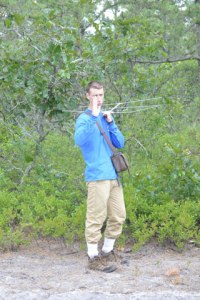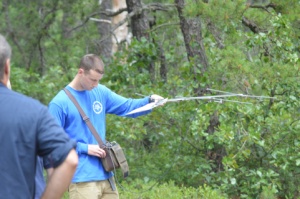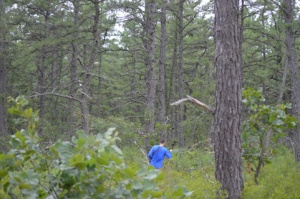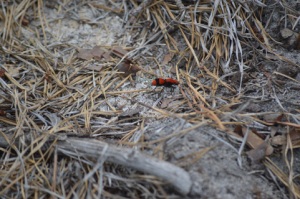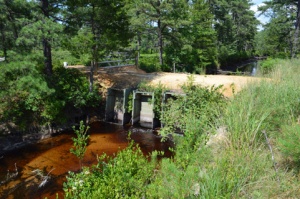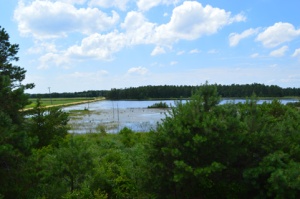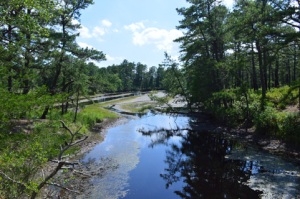John Parke of New Jersey Audubon conducted a tour last week to bring everyone up to speed on the Northern Bobwhite Restoration Initiative. Members of the South Jersey Quail Project, folks from the NJ Division of Fish & Wildlife, some NJA staffers, and some other folks came out to see some of the habitat and get caught up on the latest!
He went over this year’s results so far (nesting, depredation, survival, habitat use, results of spring mammal predator index survey), as well as demonstrating some telemetry work with the grad students on site.
We also received the exciting news that two more nests had been discovered just that morning! Per NJA, the nests (which can be very hard to find) consist of a small bowl-shaped depression on the ground covered with grasses and pine needles to form a “dome”. Bobwhite quail lay an average of one egg a day and the average clutch size is between 12-14 eggs. Once all the eggs have been laid, either adult will incubate the nest.
“The Pine Island Cranberry site in New Jersey was selected to be part of a multi-state initiative to re-establish Northern Bobwhite in the Mid-Atlantic States because of several factors; however, it was a State Approved Forest Stewardship Plan outlining long-term management goals and the extent of existing quality habitat already onsite from years of active forestry work, prescribed burning and agricultural best management practices that made it stand out above other sites in the region,” John says.
For our part, Pine Island Cranberry’s forest stewardship plan helps us to protect and improve resources by allowing forest practices to be implemented on the ground while maintaining a thriving forest ecosystem through prescribed burning, road maintenance, and boundary surveying, among other things. The cedar swamps of the New Jersey Pine Barrens help to filter and purify water by absorbing and filtering pollutants and sediment. Since the three most important things to the cranberry industry are water, water, and water, maintaining and protecting the cedar swamps are high priority. This benefits not only our land, our business, and our home, but it also helps wildlife like the bobwhite quail.
